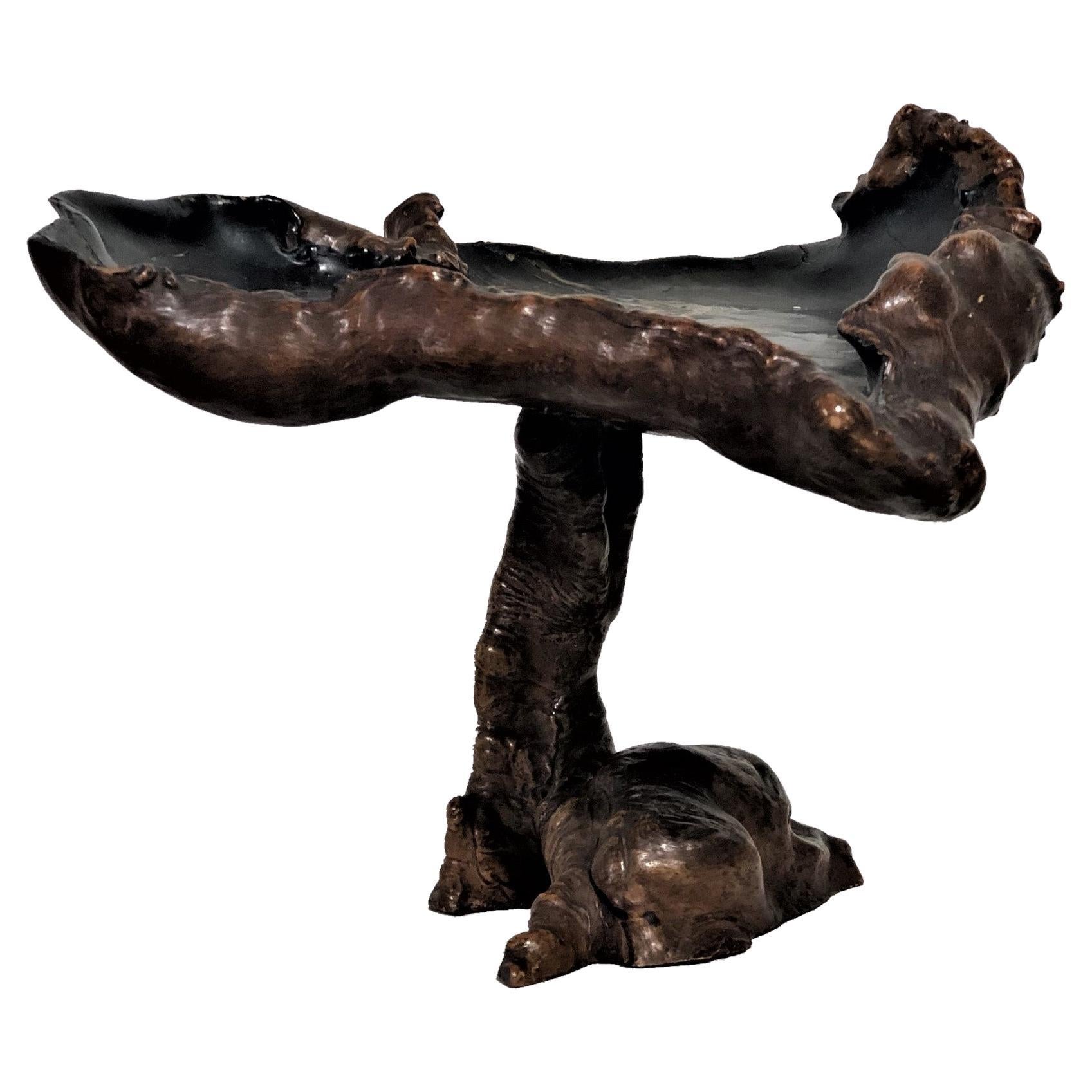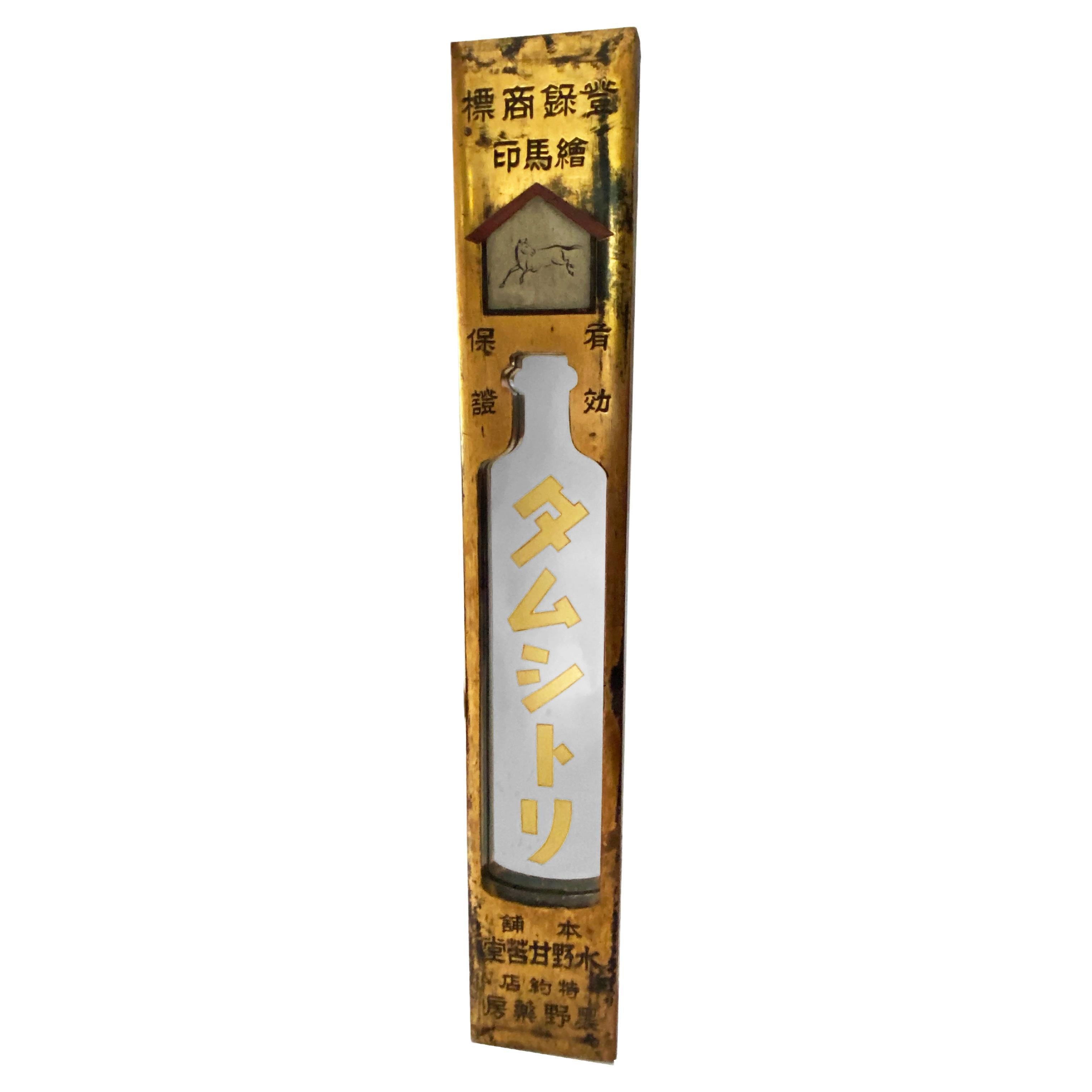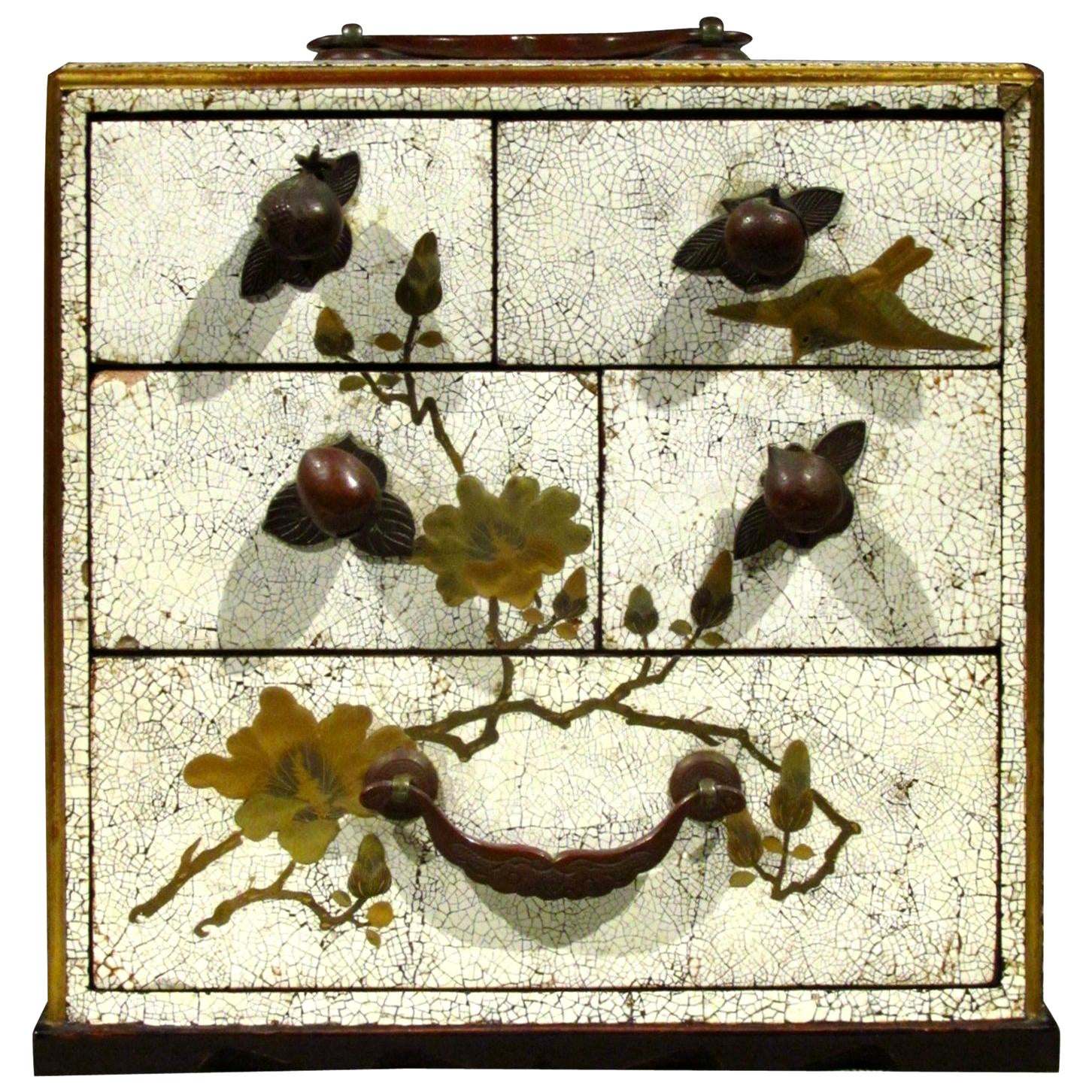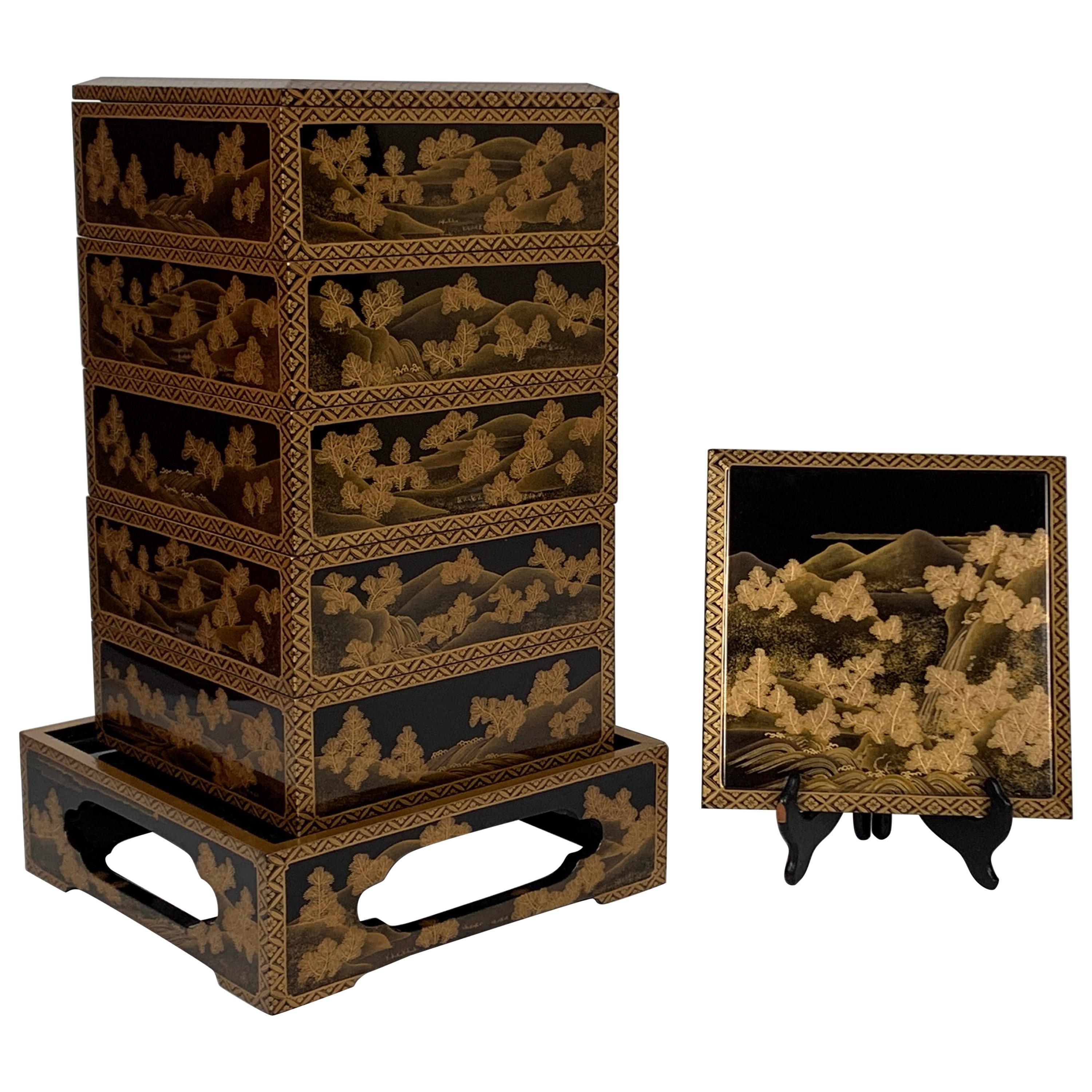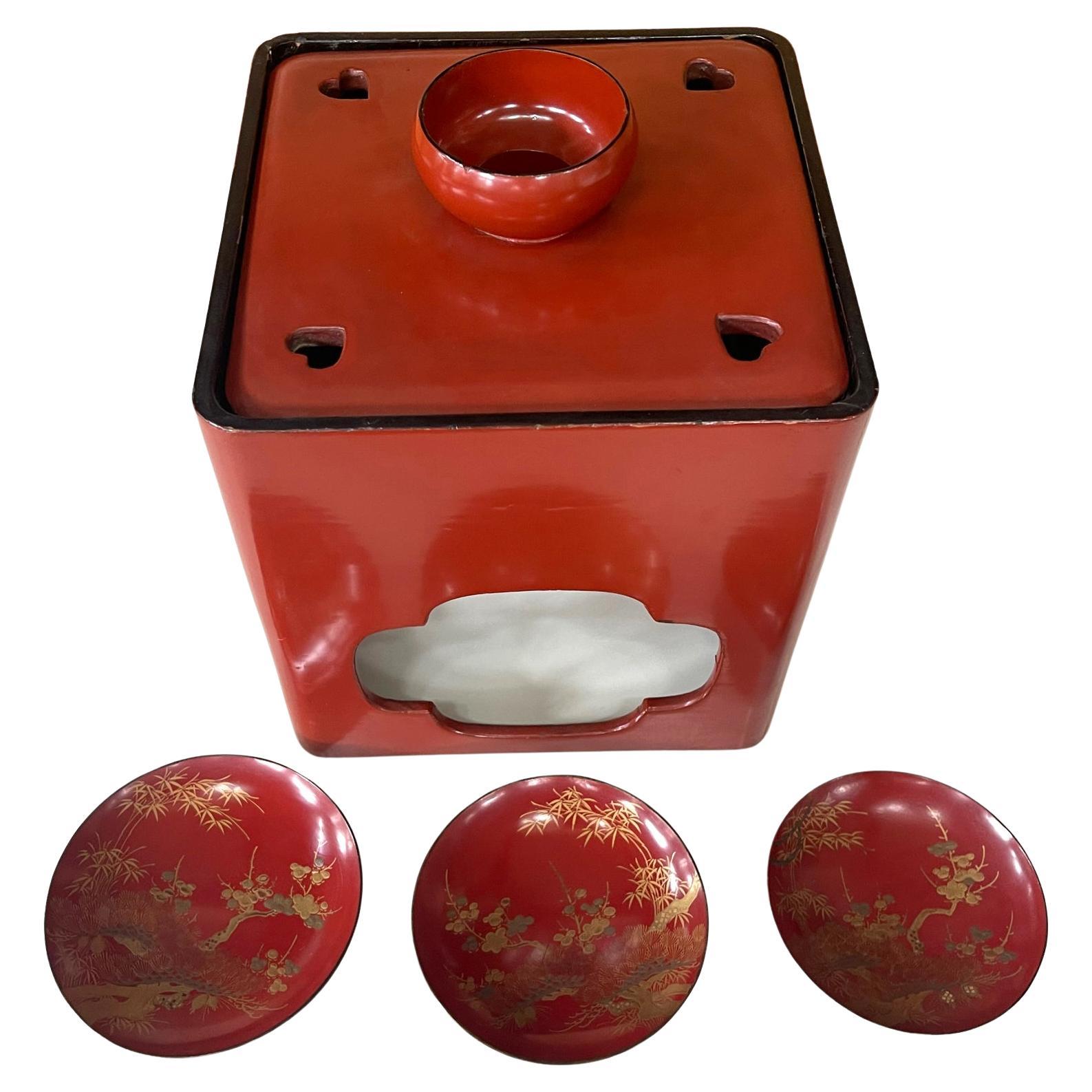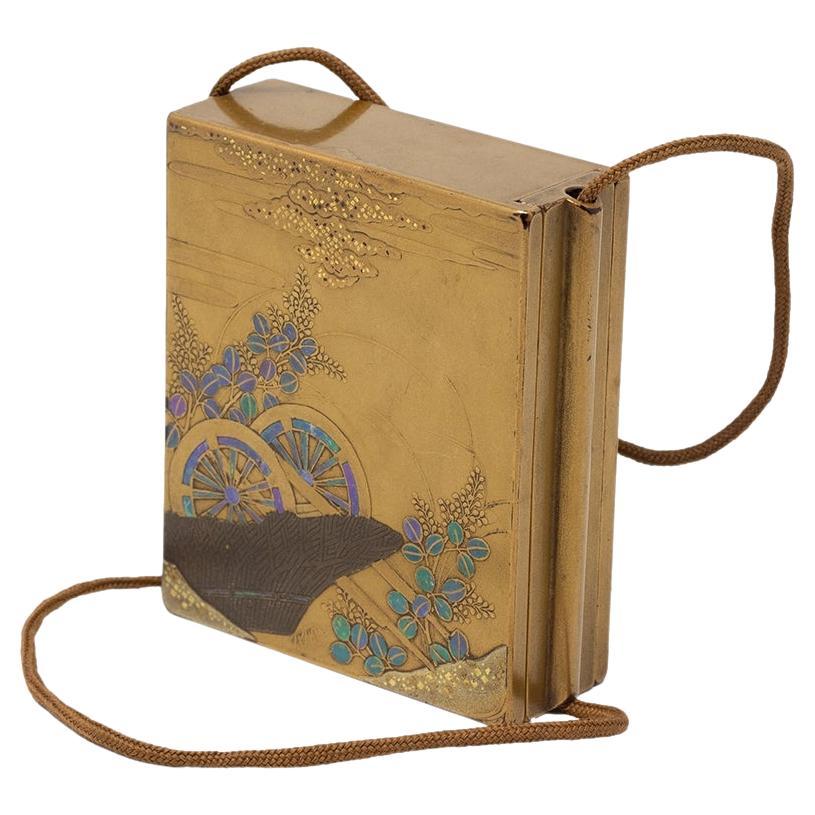Items Similar to Kanban, Japanese Shop Sign, Meiji Period, 1868-1912
Want more images or videos?
Request additional images or videos from the seller
1 of 9
Kanban, Japanese Shop Sign, Meiji Period, 1868-1912
About the Item
This 19th century Japanese Pharmacy sign advertises a popular stomach medicine, Aifu from the Juwa Co. in Osaka. The hand-painted registered trademark of the world looking through binoculars is characteristic of the International point of view during the Meiji period evoking a sense of modernity.
Black lacquer, gold leaf and poly chrome on wood, Meiji period 1868 -1912
Measure: 19" high x 35 1/2" wide.
- Dimensions:Height: 19 in (48.26 cm)Width: 35.5 in (90.17 cm)Depth: 2 in (5.08 cm)
- Style:Meiji (Of the Period)
- Materials and Techniques:
- Place of Origin:
- Period:
- Date of Manufacture:1868-1912
- Condition:Wear consistent with age and use. Wear consistent with age and use.
- Seller Location:Camden, ME
- Reference Number:
About the Seller
5.0
Gold Seller
These expertly vetted sellers are highly rated and consistently exceed customer expectations.
Established in 1984
1stDibs seller since 2010
212 sales on 1stDibs
Typical response time: 1 hour
- ShippingRetrieving quote...Ships From: Laguna Beach, CA
- Return PolicyA return for this item may be initiated within 14 days of delivery.
More From This SellerView All
- Mosaic of a Jean Dufy Paris Street Scene Watercolor c. 1950By Jean DufyLocated in Camden, MEA wonderful mosaic of ceramic and iridescent tile that captures the vitality and color of a neighborhood in Paris with small shops, a cafe, a pharmacie, along a tree lined boulevard ...Category
Mid-20th Century French Mid-Century Modern Decorative Art
MaterialsCeramic, Art Glass
- Mao Zedong, life size embroidered parade banner dated 1969Located in Camden, MEA graphically bold, lifesize embroidered textile depicting Moa Zedong grasping a symbolic red umbrella and shoulder satchel. The banner was created as a potent visual tool in announc...Category
Vintage 1960s Chinese Decorative Art
MaterialsCotton
- California Studio Navajo Sand Painting Mosaic Art Panel of Thunderbird, 1960sBy I. D. HennyLocated in Camden, MEA Navajo sand painting mosaic art wall panel of the Navajo mythological Father Sky or Thunderbird created in the 1960s in a non traditional format...Category
Mid-20th Century American Mid-Century Modern Decorative Art
MaterialsCeramic
- California Studio Mosaic Navajo Sand Painting Yei Dancers Rainbow 1960 GuardiansBy I. D. HennyLocated in Camden, MEA Navajo sand painting mosaic art wall panel of the Navajo mythological Yei Dancers Rainbow Guardians created in the 1960s in a non traditional fo...Category
Vintage 1960s American Mid-Century Modern Decorative Art
MaterialsStone
- Mosaic Panel of the Bicentennial in New York Harbor, 1978Located in Camden, MEA large mosaic panel artwork representing the bicentennial celebration in New York harbor on the evening of July 4, 1976. A memorable evening throughout the United States and partic...Category
Vintage 1970s American Mid-Century Modern Outsider and Self Taught Art
MaterialsCeramic
- Genaro Alvarez Mosaic Panel Agave Landscape Clothes Washers Mexico, circa 1955By Genaro AlvarezLocated in Camden, MEA Genaro Alvarez midcentury mosaic panel depicting a group of village women washing clothes on a riverbank framed within an oversized Agave plant. Agave has a long religious and cultural place in Mexico's belief history dating from the Aztec's goddess of Agave Mayheul who represented long life and health, dancing and fertility. Genaro Alvarez has a spiritual side within his compositions. This mosaic is a combination of a mundane chore of washing the clothes and the energy released from Agave as viewed by the Aztecs on thru Mexican religious...Category
Mid-20th Century Mexican Mid-Century Modern Decorative Art
MaterialsBrass
You May Also Like
- Japanese Meiji Period Carved Root Wood Serving Tray, ca. 1868-1912Located in New York, NYDIMENSIONS Height: 9.25 inches Width: 11.5 inches Depth: 10.5 inches ABOUT MEIJI PERIOD The Meiji Era was the 44-year period of Japan's history from 1868 to 1912 when the country was under the rule of the great Emperor Mutsuhito. Also called the Meiji Emperor, he was the first ruler of Japan to wield actual political power in centuries. It was during the Meiji period that Japanese art students first went to Europe to study Western painting, and developed a new style of painting based on these techniques, known as yoga (or ‘Western style’). Yoga painting...Category
Antique Late 19th Century Japanese Other Lacquer
MaterialsWood
- Antique Japanese Medicine "Kanban" 'Shop Sign', Late Meiji PeriodLocated in Point Richmond, CAAntique Japanese Medicine "Kanban" (Shop Sign) with mirror, Meiji Period. The Medicine being advertised is a soothing cream used to relieve itchin...Category
Early 20th Century Japanese Meiji Paintings and Screens
MaterialsWood, Lacquer
- Signed Japanese White Lacquer and Maki-E Lacquer Tansu, Meiji PeriodLocated in Ottawa, OntarioThe case decorated overall in crackle-glaze white lacquer and fitted with a patinated metal carrying handle over three tiers of small drawers. The first two tiers are comprised of a ...Category
Antique Late 19th Century Japanese Meiji Lacquer
MaterialsLacquer
- Japanese Maki-e Lacquer Stacking Box, Jubako, Meiji Period, JapanLocated in Austin, TXA fine and impressive Japanese gold maki-e decorated black lacquer five-tier jubako with presentation tray, two lids, and the original tomobako storage box, Meiji period, late 19th c...Category
Antique Late 19th Century Japanese Meiji Lacquer
MaterialsLacquer
- Japanese Lacquered Sake Drinking Set Meiji PeriodLocated in Atlanta, GAA Japanese lacquered Sake Drinking set circa late 19th century (end of Meiji period), The assemble consists of a red lacquer stand open frame support and a lid that encloses a storage space with black lacquered interior. The lid features a and a cup holder in the center and four heart shape cutouts on the corners. There are three maki-e decorated sake cups with gradual sizes. The cups showcase on the red background elaborate gold hiramaki-e paintings...Category
Antique Late 19th Century Japanese Meiji Lacquer
MaterialsWood, Lacquer
- Japanese Meiji Period Lacquer Six Drawer InroLocated in Newark, EnglandThe Inro is decorated with a gold lacquer base and features mother of pearl shell inlay leaves surounding wheeled cart with foliage. The Inro with a slide action opening which hides ...Category
Antique Late 19th Century Japanese Meiji Lacquer
MaterialsRope, Lacquer
